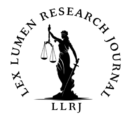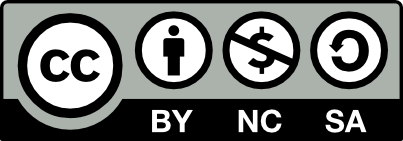Written By Khushi Jain,
Intern- Lex lumen Research Journal,
January 2025
Introduction
India with one of the world’s largest youngest nations has a substantial child population to consider and protect. Recently, critical aspects of child pornography, particularly concerning the possession, storage, and transmission of child pornographic material, have triggered a widespread debate. On January 2024, Justice N Anand Venkatesh of Madras High Court in S. Harish vs The Inspector of Police quashed the FIR under Sections 67 B of IT Act and Section 14(1) of the POCSO. It was issued against a 28-year-old man where the court held that watching child pornography in private would not fall within the scope of the POCSO since “watching or downloading” is not covered under the ambit of Section 67 B of the IT Act. It was also opined that merely downloading the material and not publishing it or transmitting it would provide him immunity from the said provisions.
However, under the discretion of a bench comprising Chief Justice of India, Dr DY Chandrachud and Justice JB Pardiwala, the Supreme Court set aside the contention by highlighting the surrounding grave concerns while suggesting changes in required terminologies. On 23 September 2024, the Supreme Court in Just Rights for Child Alliance and Another v. S. Harish, through outlining the scope of mens rea and actus rea derived from Section 15 of POCSO held that mere possession, transmission or viewing of child pornography would constitute an offence under POCSO Act.
The paper aims to explore challenges of child pornography holistically by focusing upon the recent judgements and related legal provisions followed by recent changes. Further, a cross jurisdictional analysis is provided. It also delves upon the unexplored and unaddressed problems and gives a prospective model emphasizing upon plausible way forward for tackling online child sexual abuse.
Related Legal Provisions
The Optional Protocol to the Convention on the Rights of the Child defines child pornography as any representation, by whatever means, of a child engaged in real or simulated explicit sexual activities or any representation of the sexual parts of a child for primarily sexual purposes.
POCSO Act, a gender-neutral law, was passed in 2012 aiming to protect and safeguard children from sexual harassment, sexual assault and using of children for pornography. A ‘child’ includes any person below the age of 18 years. Sexual assault involves a touch on the private parts of the child, while harassment involves unwanted sexual behaviour through the use of words, gestures or actions. Using a child in any media for the purpose of sexual gratification involves a punishment of imprisonment of up to 5 years. Possession of child pornography for commercial uses also amounts to imprisonment of up to 3 years.
Section 67B of IT Act protects children from online exploitation and child pornography by criminalizing the transmission and facilitation of child sexual abuse material over digital platforms. It prohibits ‘publishing’, ‘creating’ and ‘transmitting’ child pornography.
While the government has reported the shutdown of various websites because of the propagation of child porn material. However, it is a matter of grave concern that such content is also bought and sold on the dark web and payment is made in cryptocurrencies where sellers and buyers’ identities are unknown.
Key Takeaways from Ruling
The broader scope of offences: Section 15 of POCSO not only penalizes “failure to delete, destroy or report” child pornography but also ‘actual transmission, propagation, display, distribution’ of material. Additionally, Section 67B of the IT Act contains five subsections that deal with a broader ambit covering not only the penalization of electronic dissemination but also the possession and consumption of child pornography.
Mens rea inferred through Actus rea: Section 30 of the POCSO Act for any offence, the Court ‘shall’ presume that the accused had a culpable mental state. Additionally, if certain ‘foundational facts’ are laid, the burden lies on the accused to prove that he is not guilty. Intention to transmit or share child pornographic material could also be established from the fact that the material was stored or possessed and not deleted or reported.
Change in terminology: The Court observed that ‘child pornography’, starting from a sexual act to recording it, deepens the trauma for a child. The use of ‘CSEAM’ instead of child pornography serves as a more appropriate and comprehensive term as it rightly places emphasis on exploitation and abuse of the child, highlighting the criminal nature of the act and the need for a serious and robust response. The current term undermines the victimization, suggesting a correlation to pornography that may be legal and voluntary, failing to describe the true horror that is faced by countless children every year.
Cross-Jurisdictional Analysis
Child pornography is illegal in the USA under federal law. Federal law defines child pornography as any visual depiction of sexually explicit conduct involving a minor. The offence is punishable by up to life imprisonment and fines up to $250,000 with 99.1% of child pornography offenders being sentenced to prison.
Australia has a tiered legal framework where child exploitation material is classified under federal and state laws. The laws are differently defined in the various jurisdictions, as are the penalties which may range with a maximum penalty of 15 years.
From Unaddressed Problems to Possible Solutions
Jurisdictional Variability: Different interpretations regarding related provisions exist within different high courts, ranging from narrow to broad perspectives, creating confusion and inconsistency and further eroding public trust. Madras High Court in P.G. Sam Infant Jones v Inspector of Police observed that viewing the pornography in private domain is not an offence given an individual’s right to expression and privacy. In Lakshya v State of Maharashtra & Another, it was held that merely because the accused therein was not the creator of the pornographic material in question it cannot be said that no offence had been made out and watching the content makes him liable. However, in Inayathulla N v State, it was held that mere browsing or watching of such material would not attract liability. It leads to uncertainty and conflicting outcomes for similar offences allowing offenders to exploit provided safeguards.
Standardized guidelines to harmonize laws concerning child pornography should be enabled for clearer enforcement. Collaborations and discussions among the high court under the guidance of the Supreme Court should be fostered to share best practices and judicial interpretations of prevailing provisions to protect children, reducing inconsistencies in legal rulings.
Social Implications: Porn addiction is very easy due to its reinforcing nature leading to the instinctual drive for sex. Due to the accessibility of sexually explicit material on the internet, porn addiction is becoming a growing concern in children as soon as they reach puberty. They are exposed to endless pages of adult content with the click of a button. A study found that in a sample of 1000 adolescents, 66% of males and 39% of females had watched online pornography. Addiction to such content leads to severe mental health issues, distorted perceptions of sexuality, normalization of exploitative behaviours and increased vulnerability to exploitation. It blurs the boundary that protect rights and safety of children further making them more vulnerable to exploitation.
Comprehensive sexual education programs emphasizing healthy relationships, consent, and the risks of pornography addiction should be introduced in the school curriculum. A more comfortable and inclusive home environment allowing children to openly discuss sensitive issues should be prioritized rather than monitoring and restricting access to explicit content.
Conflict between Digital Privacy and Data Collection: One area of concern is the possible clash between the right to digital privacy and law enforcement’s need to find offenders. While the ruling strengthens the government’s ability to prosecute those who possess child pornography, it also raises questions about surveillance, data collection, and the balance between privacy rights and protecting children from exploitation.
Clear boundaries between data collection and respecting the privacy of individuals should exist while ensuring responsible handling of personal information through employing data anonymization and encryption methods. Open communication of data collection practices could further ensure transparency and accountability within law enforcement agencies.
Conclusion
“There can be no keener revelation of a society’s soul than the way in which it treats its children.” Pornography of child is progressively autocratic in the current world and hence given the title as the fastest growing and developing internet exercises. The judgement by the Supreme Court on child pornography emphasized various areas, from broadening the scope of legislation to suggesting measures to make the law more comprehensive. It extends beyond the immediate legal extend to a step in changing societal attitudes and evaluating the preventive measures against harmful effects of sexually explicit content adolescents.
The ruling acts as a deterrent, strengthening the provisions of POCSO, promoting a safer digital environment, and urging stronger community and parental vigilance to protect adolescents from such harmful influences while also aiming to provide a secure environment for children.
However, certain grave concerns still remain unaddressed emphasizing upon a need of more comprehensive rulings and interpretations of laws while also respecting rights of both children and other individuals.


